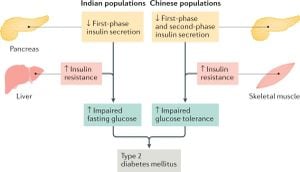September and October have witnessed tragedy and uncertainty for citizens across the southeastern United States and even parts of Mexico. This year's hurricane season has already proven to be one of the worst the region has seen, with severe damage to infrastructure, loss of lives, and significant upheaval for countless individuals.
The stormy occurrences began on September 25, as Hurricane Helene, categorized as a Category 4 storm, initiated its devastating path across the Gulf Coast of Florida. This relentless hurricane, with winds tearing through at hurricane-force, wreaked havoc by causing surging waters of up to 15 feet. Initial destruction was widespread, with homes suffering severe damage, roads rendered impassable due to debris, and countless residents left scrambling for recovery.
By October 6, Helene had weakened to a tropical storm but not before unleashing horrific impacts as it traveled along the Carolinas. The storm brought about flooding, destructive winds, and torrential rains, devastating areas reminiscent of the notorious Hurricane Katrina from 2005.
But the wave of destruction did not stop there. Shortly after Helene’s winds calmed down, Hurricane Milton entered the scene two weeks later. Milton, after forming as a tropical storm, viciously intensified to become a Category 5 hurricane, mimicking Helene’s path through the Gulf of Florida. Milton made landfall near Siesta Key as a Category 3 hurricane, raising concerns for meteorologists due to its formidable wind speeds and storm surge.
Milton's rapid intensification made it officially the strongest tropical cyclone recorded globally for 2024, leading to widespread devastation and deadly tornado outbreaks across the affected regions. Tragically, as of October 13, the storm's insidious impact had claimed 21 lives, with over five million homes and businesses left without power. This situation underscored not just the storm’s intensity but also the stark reality faced by the affected communities.
Despite the overwhelming damage anticipated from Milton, many residents expressed relief as the aftermath was less catastrophic than initially predicted. Florida Governor Ron DeSantis remarked on the situation, expressing confidence in the resilience of the state’s populace, stating, “You face two hurricanes in a couple of weeks — not easy to go through — but I’ve seen a lot of resilience throughout this state.” He firmly believed the area would recover quickly from the upheaval.
Reflecting upon the catastrophic events, there's been much discussion about the role of climate change as it relates to hurricanes and natural disasters. Experts point out how climate shifts are intensifying these storms, making them more ferocious. “Evaporation intensifies as temperatures rise, and so does the transfer of heat from the oceans to the air. When storms travel over warm seas, they pull more water vapor and heat, leading to stronger winds, heavier rains, and greater flooding once they make landfall,” according to the Environmental Defense Fund.
The increasingly dire consequences of climate change can be observed not just with the likes of Helene or Milton but also with past hurricanes such as Katrina. The toll from Katrina predominantly stemmed from the life-threatening storm surge, largely driven by torrential rainfall. Rising sea levels due to global warming only serve to exacerbate the disastrous effects of hurricanes.
Given the accelerating pace of global warming and the ever-evolving climate, structures indicate a looming reality: the emergence of storms akin to Helene and Milton is not merely possible but likely. People are bound to witness even fiercer storms as the climate tumult continues to escalate.
Meanwhile, the impact of these storms also reverberates beyond the immediate destruction; it's created ripples within the travel industry. With the recent hurricanes causing widespread havoc, travelers are reminded of the fundamental importance of securing travel protection. The heavy winds and relentless rainfall from these storms have underscored the necessity of protecting travel investments with reliable insurance plans.
While insurances for automobiles and homes are often mandatory, Americans are not obliged to purchase travel insurance. Yet, its advantages can be substantial, especially during severe weather events like the current hurricane season, reminding travelers just how fragile vacation plans can be under the threat of natural disasters. Travelers can often secure travel insurance for just about 6% to 7% of their total trip expenses, according to NerdWallet.
The unpredictable nature of tropical storms and hurricanes adds to the urgency of obtaining these protections well before trouble brews on the forecast. For anyone planning to travel, waiting until conditions deteriorate to commit to protection could yield disastrous outcomes. An excellent option for added flexibility is the Cancel for Any Reason (CFAR) policy, allowing travelers to modify their plans as circumstances dictate.
“The only thing worse than missing out on your dream vacation or having it impacted is having to foot the bill for an underwhelming experience. That’s where travel insurance shines,” shares Daniel Durazo, director of external communications at Allianz Partners USA. Whether dealing with flight delays, property loss, or other travel-related issues, it’s reassuring to have protections in place.
For those unsure about acquiring travel insurance, it’s beneficial to look for well-established providers known for their adaptive approaches, making processes like obtaining policy information and filing claims as user-friendly as possible.
All things considered, the recent hurricanes Helene and Milton have not only wreaked havoc across various regions but also ignited necessary conversations surrounding climate change, disaster preparedness, and the imperative of safeguarding travel plans.



